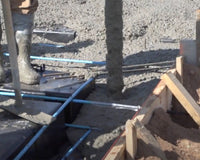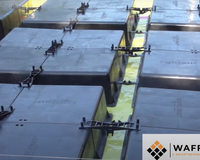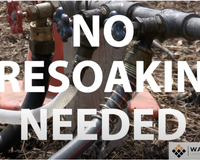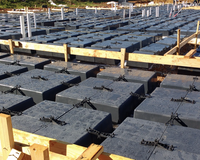Constructing a durable concrete foundation on rocky soil can be a challenging task for builders. However, by following certain guidelines and procedures, it is possible to create a strong and long-lasting foundation that can withstand the test of time. In this blog post, we will discuss some essential considerations for constructing a durable concrete foundation on rocky soils.
- Evaluate the Soil Conditions
Before starting the construction, it is crucial to evaluate the existing soil conditions of the site. Rocky soils can vary significantly in terms of their composition, strength, and stability. It is essential to assess the rock size, shape, and spacing to determine the best approach for your foundation design.
- Plan the Foundation Design
Based on the site assessment, a foundation design that encounters rock must consider its construction methods. A raft foundation distributes the load of the building across the entire foundation area, while a pile foundation transfers the load to deeper and more stable layers of soil. The disadvantage of a pile foundation is that it requires deep drilling which can be costly and time consuming when drilling in rock. Most low rise to mid-rise buildings will benefit from using a shallow foundation design like Wafflemat.
- Prepare the Site
Once the foundation has been designed, the site is prepared.
The Wafflemat Foundation System can help avoid excavating. You will simply need to grade the site and lay the waffle boxes. Read here for more information on how to properly prep a build site for Wafflemat.
- Choose your Concrete Reinforcement Method
Reinforced concrete is essential for constructing a durable foundation on rocky soil. There are two main options for reinforcement: rebar and post tensioning cables.
- Rebar is the traditional material used to provide strength. Concrete carries compressive forces and steel carries tensile forces.
- Post-tensioning cables are an effective way to reinforce concrete structures, offering several advantages over traditional rebar. Post-tensioning cables use high-strength steel strands that are tensioned after the concrete has been poured, resulting in a more efficient use of materials, and reduced overall weight. This method also allows for increased flexibility in design, with the ability to create thinner and lighter concrete sections, longer spans, and larger slabs without sacrificing strength or stability. Additionally, post-tensioning can provide increased durability and resistance to cracking, making it a popular choice for high-stress applications such as bridges, light commercial and large residential buildings.
- Control the Water Content
The water / cement ratio of the concrete mix must be carefully controlled to ensure proper hydration and curing. Too much water can weaken the concrete and cause shrinkage cracks, while too little water can result in insufficient curing and reduced strength. The concrete should be compacted and vibrated to eliminate any air pockets and achieve maximum density.
- Monitor the Construction
Throughout the construction process, it is essential to monitor the site and ensure that the foundation is being constructed according to the design specifications. Any deviations or unexpected conditions should be addressed immediately to prevent any potential problems in the future.
In conclusion, constructing a durable concrete foundation on rocky soil requires careful planning, preparation, and execution and choosing the right foundation system is critical for a successful project design.
By following the tips outlined in this blog post, you can create a foundation that can withstand the test of time and provide a strong and stable base for any structure.
To speak with a foundation expert about the Wafflemat Foundation System for your construction project, contact us today or visit our resources page.





